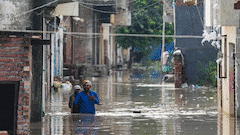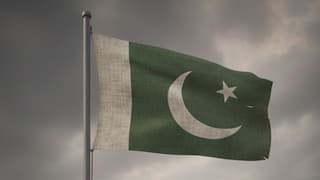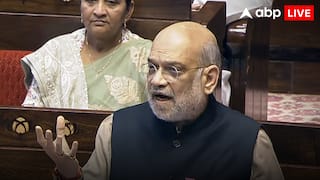Sudden Rainfall Brings Down Temperature In Delhi-NCR, No Heatwave For Next 5 Days
On Thursday, Delhi experienced powerful winds that raised dust in certain areas.

Delhiites got some sort of relief from the scorching heat, as the national capital recieved light rain on Thursday evening. For past few days, several regions of Delhi and the northern parts of India were battered by an intense heat wave, as the mercury soared to a scorching 46 degrees Celsius in certain areas.
On Thursday, Delhi experienced powerful winds that raised dust in certain areas. However, the cloudy atmosphere prevented the temperature from exceeding 36. 9 degrees Celsius, PTI reported.
VIDEO | Delhi-NCR witnesses sudden weather change and drop in temperature. pic.twitter.com/TTCBWXy0d0
— Press Trust of India (@PTI_News) May 25, 2023
The IMD has projected that the capital will experience comparable weather conditions in the next two to three days, with no expected heatwave until May 30.
Hailstorm In Delhi #DelhiRains #Noida @SkymetWeather @RWFC_ND @SkyWatchUpdates @SouravSaxena_17 pic.twitter.com/hH3CZJd3Pd
— RK4Years (@RadhaKrishna4y) May 25, 2023
The IMD has forecasted sporadic rainfall for the next two to three days in the northwest region of India, including the national capital and its environs, owing to the impact of a western disturbance prevailing over the western Himalayan region.
According to officials, the maximum power demand in Delhi during this season reached its highest on Tuesday, reaching 6,916 MW as a result of the prevailing heatwave.
According to officials, last summer the city experienced a surge in power demand, peaking at 7,695 MW and there are projections that it may even increase up to 8,100 MW this year.
A heatwave is declared when the highest temperature of a location hits 40 degrees Celsius in plain areas, 37 degrees Celsius in coastal areas, and 30 degrees Celsius in hilly regions, with a minimum 4. 5-degree difference from the average temperature.
In its recent forecast, the meteorological department anticipated lower-than-average maximum temperatures and a decreased number of heatwave occurrences in the northwest region of India during the month of May.
The IMD predicts that the southwest monsoon may be slightly delayed, which could result in higher-than-average maximum temperatures lasting for an extended period.
A recent study from the University of Cambridge reveals that India is experiencing more frequent and intense heatwaves as a result of climate change. The study classifies over 90% of the country as in a state of high caution or danger due to the severe impact of these heatwaves.
Despite having a state action plan for climate change, Delhi remains highly susceptible to the adverse effects of heatwaves, as per the research findings.






































